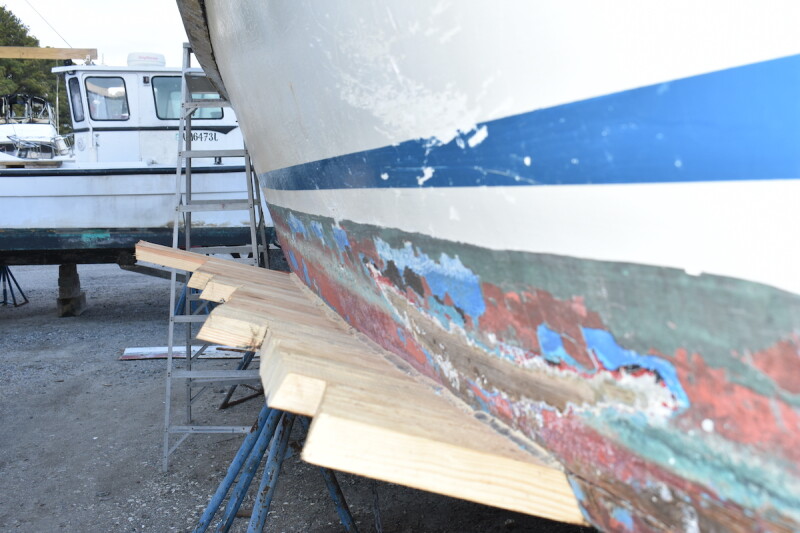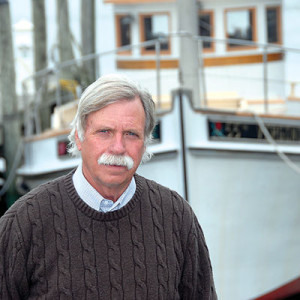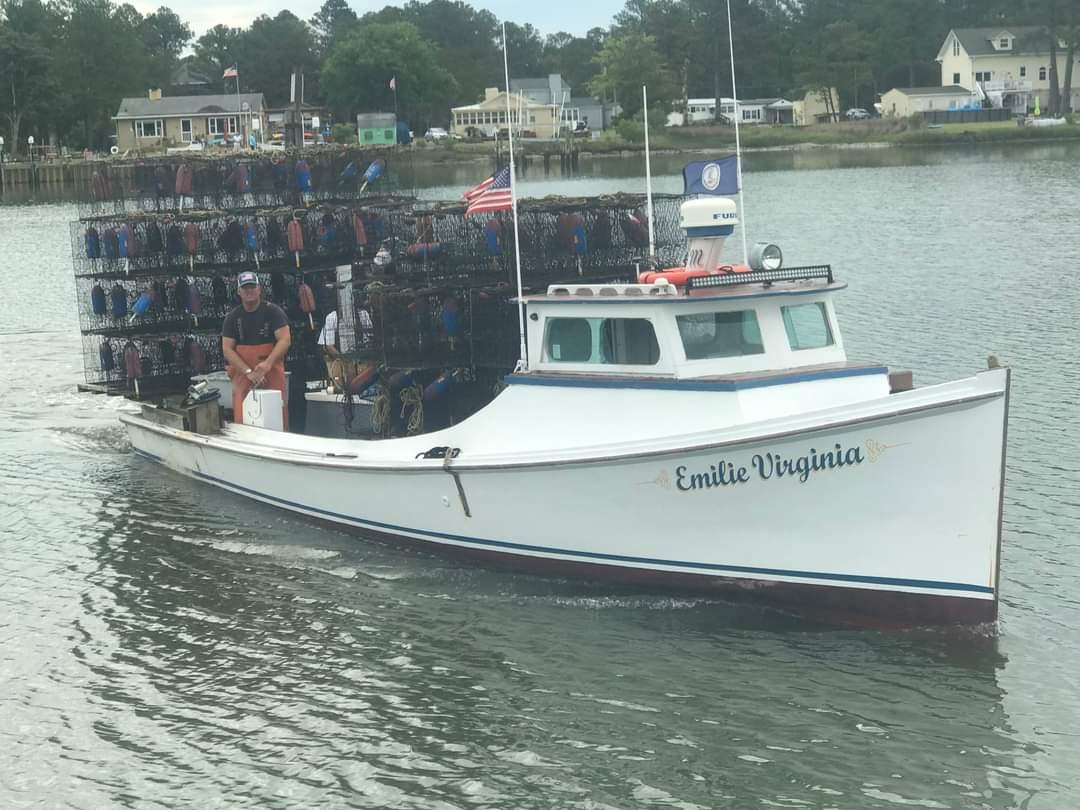Crown Pointe Marina in Hayes, Va., is located in the heart of Guinea Neck in Gloucester County where there is a historically dedicated pocket of commercial fishing.
Mason owns Virginia Oyster Co. at Hayes and has been a commercial fisherman since he was 21 years old. He uses the Emilie Virginia in the state’s oyster and crab pot fisheries.
The Emilie Virginia was built in 1983 by the late Bobby Crockett of Tangier Island. Crockett spent most of his working life as a waterman but found he had a knack for working on wooden boats. So, in the 1970s he went to Deltaville, Va. and tutored for a while under Grover Lee Owens considered one of the best builders on Chesapeake Bay. He then started his own boatbuilding shop and railway on the island.
Mason learned boat repair about the same way that Crockett learned under Owens. He hired well-known wooden boatbuilder Bill Keeling of Mathews County, Va. a few years ago to install 10 feet of new bottom planking and to do other work on the Emilie Virginia.
“I watched him and I asked questions and now I feel I have the confidence and knowledge to do some of my own work,” says Mason.
He is currently installing locally cut spruce pine planks on the bottom. He got the cured lumber from Wesley Sanger of Peary, Va. one of the few lumber yards in the Chesapeake region that still caters to cutting and curing local lumber to size for wooden boatbuilders.
Mason installed 16 feet of new bottom cross-planking on one side and 10 feet on the other side, rebuilt the stern and is going to rebuild the pilothouse. If he runs into any problems his father Al Mason will help him. Al grew up helping his father fish and maintain their commercial fishing boats.
The boatyard is working with Mason to ease time restraints on his work, as he also oysters during weekdays in his other wooden boat. That one is a 28’ deadrise built in 1993, by Jerry Pruitt and Micky Parks of Tangier Island.
“This is a year around business,” says Mason. “I’m dredging oysters eight months out of the year on public and private grounds and working crab pots the other months. I need two boats to keep up with the work.”








